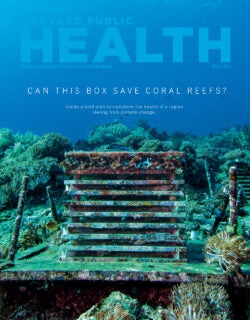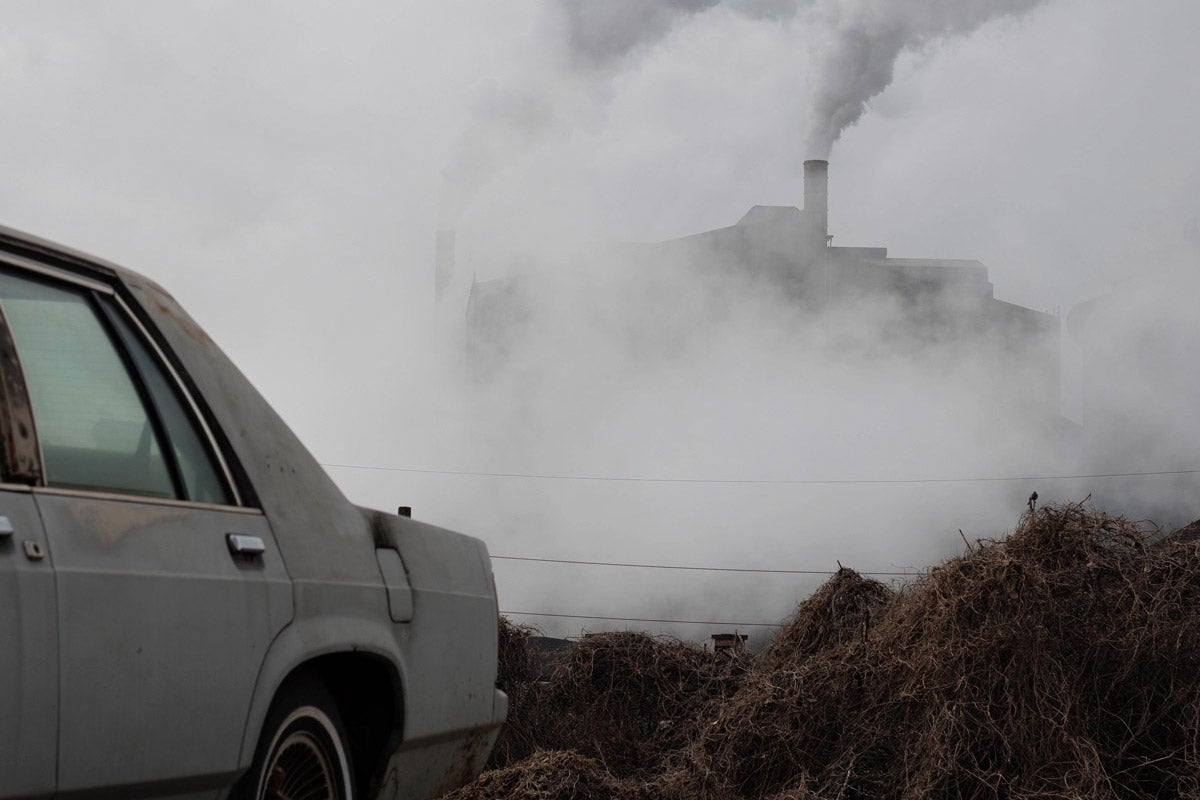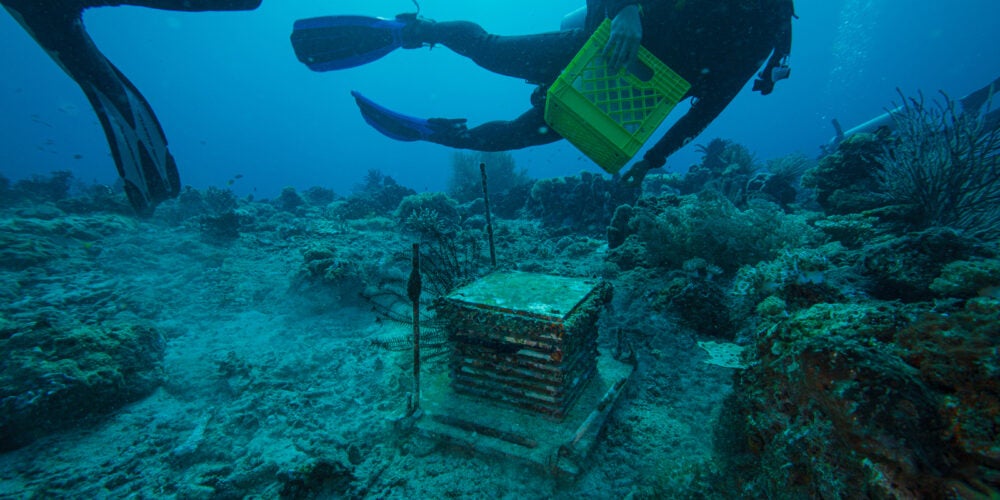
Feature
A reef gets a reboot in Madagascar
The face of climate change in southwest Madagascar might be a brown-and-white bottom feeder the locals call fiandolo—“the fish of the dead.” Formally Plotosus lineatus, or the striped eel catfish, it tops out at 13 inches, has venomous spines protruding from its dorsal and pectoral fins, and used to be considered unfit for human consumption. “It was the food that you gave to the pig,” says Emma Gibbons, a director at the U.K.-based nonprofit Reef Doctor, who began working on the shores of Bay of Ranobe in southwest Madagascar 17 years ago. Nowadays, though, fiandolo is common in the local markets and is an increasingly important source of nutrition in an area of the world where calories are scarce—Bay of Ranobe abuts a region that is mostly desert, making its fisheries an essential source of food. As a country, Madagascar has some of the highest rates of child malnutrition in the world, worsened lately by what the United Nations has described as potentially the world’s first climate change-induced famine. Because of that famine, brought on by drought, “we are breaking all kinds of taboos, including catching, selling, and eating fiandolo,” says Bruno Keza Souvenir, president of FIMIHARA, a local fisheries management group. The country is also undergoing dramatic environmental shifts associated with deforestation, mining, and overfishing. In that context, the rise of fiandolo as a food source says as much about the health of the residents as it does Bay of Ranobe’s coral reefs, which have shrunk by 90 percent in the last 40 years, causing a plunge in biodiversity and degradation of local fisheries.
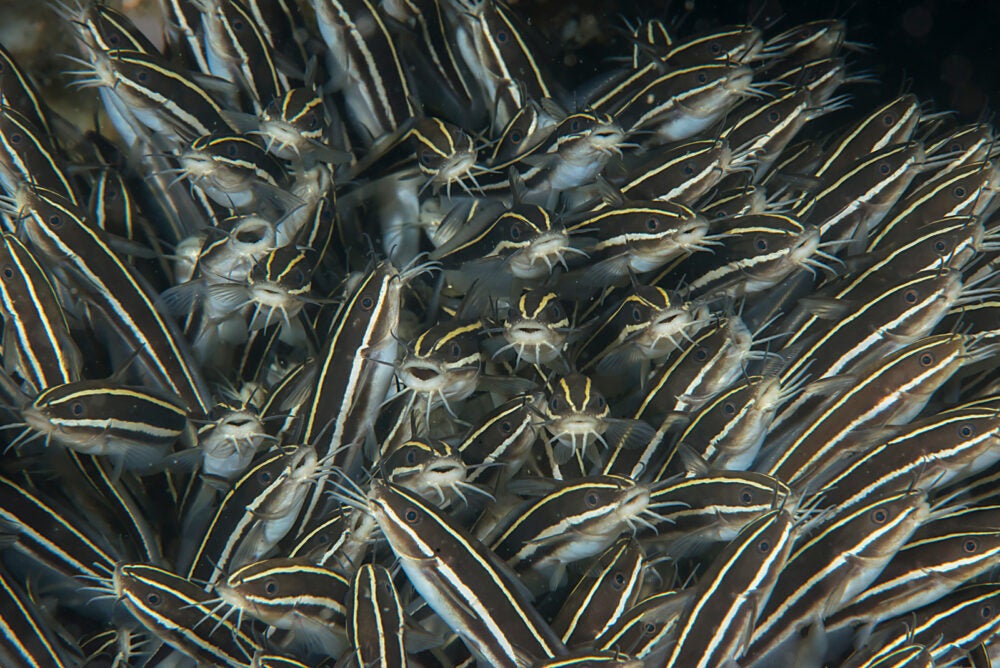
A school of striped eel catfish.
Photo by Hansger T. Broeder / iStock
All around the world, climate change is driving a cascade of interrelated effects, with powerful impacts on both environmental and human health. The question is: Can targeted interventions do the same? To find out, an international group of scientists from Madagascar, Europe, and the U.S. are teaming up to analyze the environmental, economic, and public health potential of artificial reefs. They will assess everything from experimental technologies aimed at bolstering biodiversity to the nutritional intake and physical and mental health of villagers who depend on the bay.
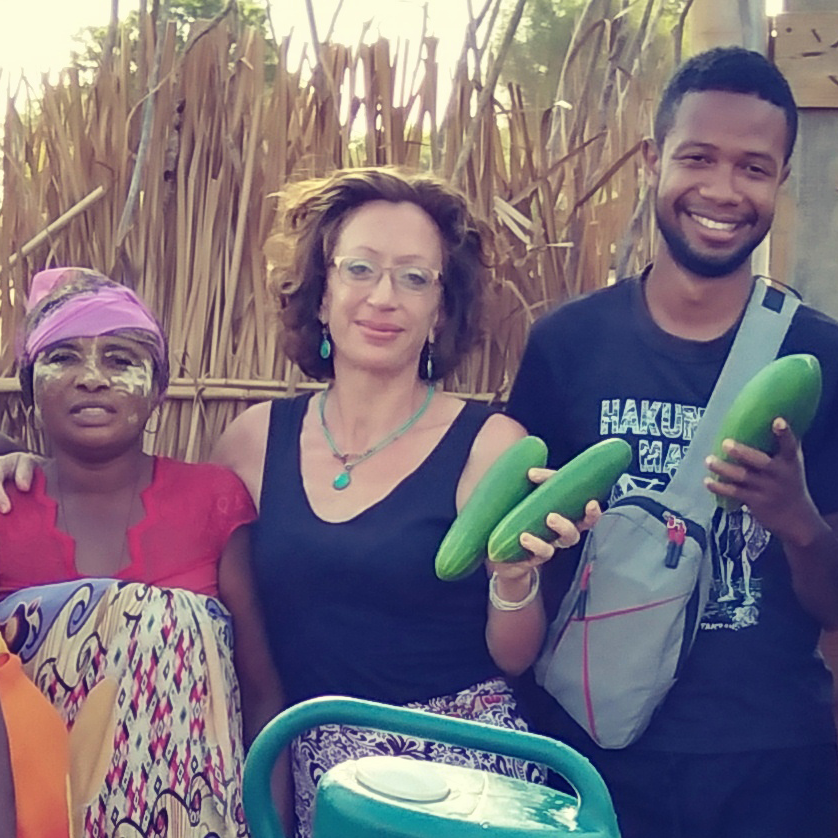
This is a decidedly different approach to climate change mitigation and food security. When it comes to Madagascar, media attention and foreign aid tend to focus on conservation and biodiversity, while human health and economic development take a back seat. For residents, this can understandably be a source of tension. “Protecting biodiversity is all well and good as long as you have food on the table,” Gibbons says. The new five-year study, funded through the Belmont Forum and run by researchers from Harvard T.H. Chan School of Public Health, Harvard University, the University of Toliara, Sweden’s Beijer Institute of Ecological Economics, France’s Research Institute for Development, and Reef Doctor, aims to break that paradigm.
The scope of the research is noteworthy, says Peter Edwards, an officer of conservation science at The Pew Charitable Trusts who is not involved with the study. It seems logical that a flourishing reef will benefit the fishery and people who depend on it, Edwards says, “but there isn’t a huge evidence base to make those direct linkages.”
One concern Edwards holds is that it will probably take years for the full ecological, economic, and public health effects of the artificial reefs to be seen, analyzed, and understood. Still, if the method pans out for the less than 20,000 people scattered across the 13 villages of Bay of Ranobe, the study could offer a blueprint to help nourish vulnerable coastal communities around the world while replenishing exploited and neglected natural resources.
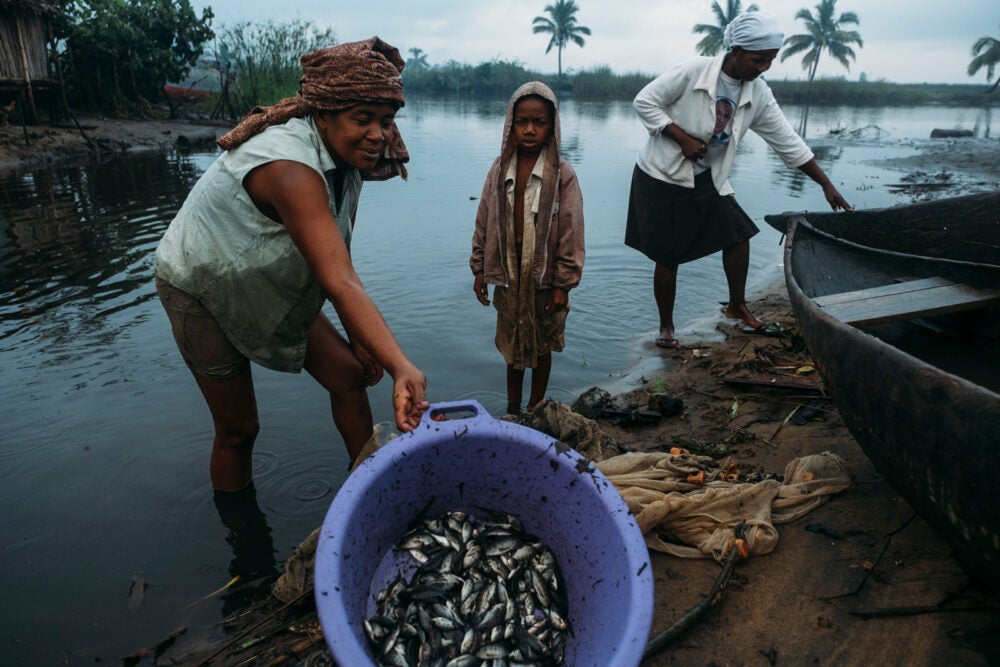
A woman’s catch from a net off Maronsetra in northwestern Madagascar.
Photo by Rebecca Gaal
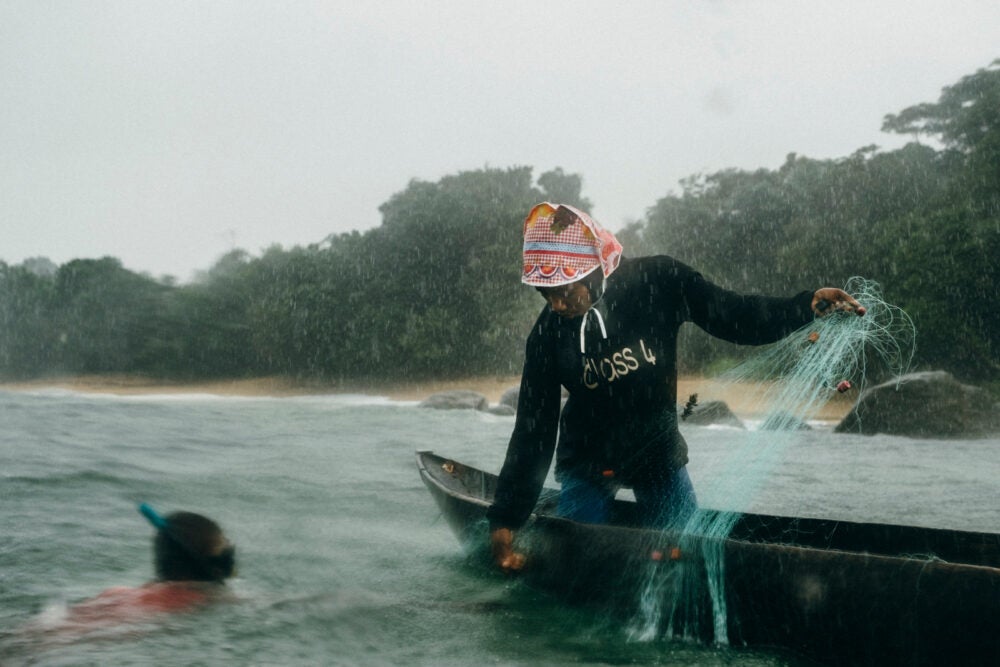
A husband and wife net fish in pouring rain near Marofototra.
Photo by Rebecca Gaal
What’s happening to the reefs in Bay of Ranobe isn’t an isolated event— reefs around the world are dying at unsettling rates. A study of 3,582 reefs across 87 countries published in 2021 found the amount of living coral covering the oceans’ floors has declined by half since the 1950s, and catches of reef-associated fish have plummeted by 60 percent. Simultaneously, evidence is mounting that aquatic foods are some of the most nutrient-rich options nature has to offer and carry a relatively low environmental impact when compared with other sources of animal protein.
Sign up for Harvard Public Health
Delivered to your inbox weekly.
In wealthy countries, coral reefs are often polychromatic magnets for tourism dollars. But in Bay of Ranobe—and in impoverished tropical and subtropical coastal communities around the globe—reefs undergird local economies, mitigate destructive storm surges, and shape delicate food webs that influence environmental and human health in ways both big and small. A thriving reef teeming with bait fish and tasty crustaceans will lure in bigger predatory fish, allowing fishers to go after myriad species and offer residents a varied diet of mixed nutrients. But as the health of a reef declines, there are fewer bait fish, fewer predators, and fewer targets for fishers. So, they take what they can get, often in the form of smaller, younger fish—in Bay of Ranobe it’s common to catch and consume fish as small as four centimeters—and less desirable species, such as fiandolo, which has lower levels of vitamin A, vitamin B12, and iron when compared with most other reef fish in the region.
To bolster biodiversity and food security, Reef Doctor, along with FIMIHARA, in 2016 launched a program to build a network of artificial reefs throughout the bay. Five years in, coral polyps have sprouted on the initial reefs, which are made from locally sourced limestone and resemble a pile of rocks on the seafloor. Slugs, sponges, and other important inhabitants have staked their claim, and fishers are pulling in catches. It’s a good start, and if it continues, the artificial reefs could offer a seemingly simple solution to some very big, overlapping problems. But as Gibbons is well aware, international development is littered with the remains of well-intentioned, well-financed yet ultimately ineffectual “solutions” to local challenges.
The new study aims to see just how good this latest solution is, not just for the reefs but also for the people who depend on them.
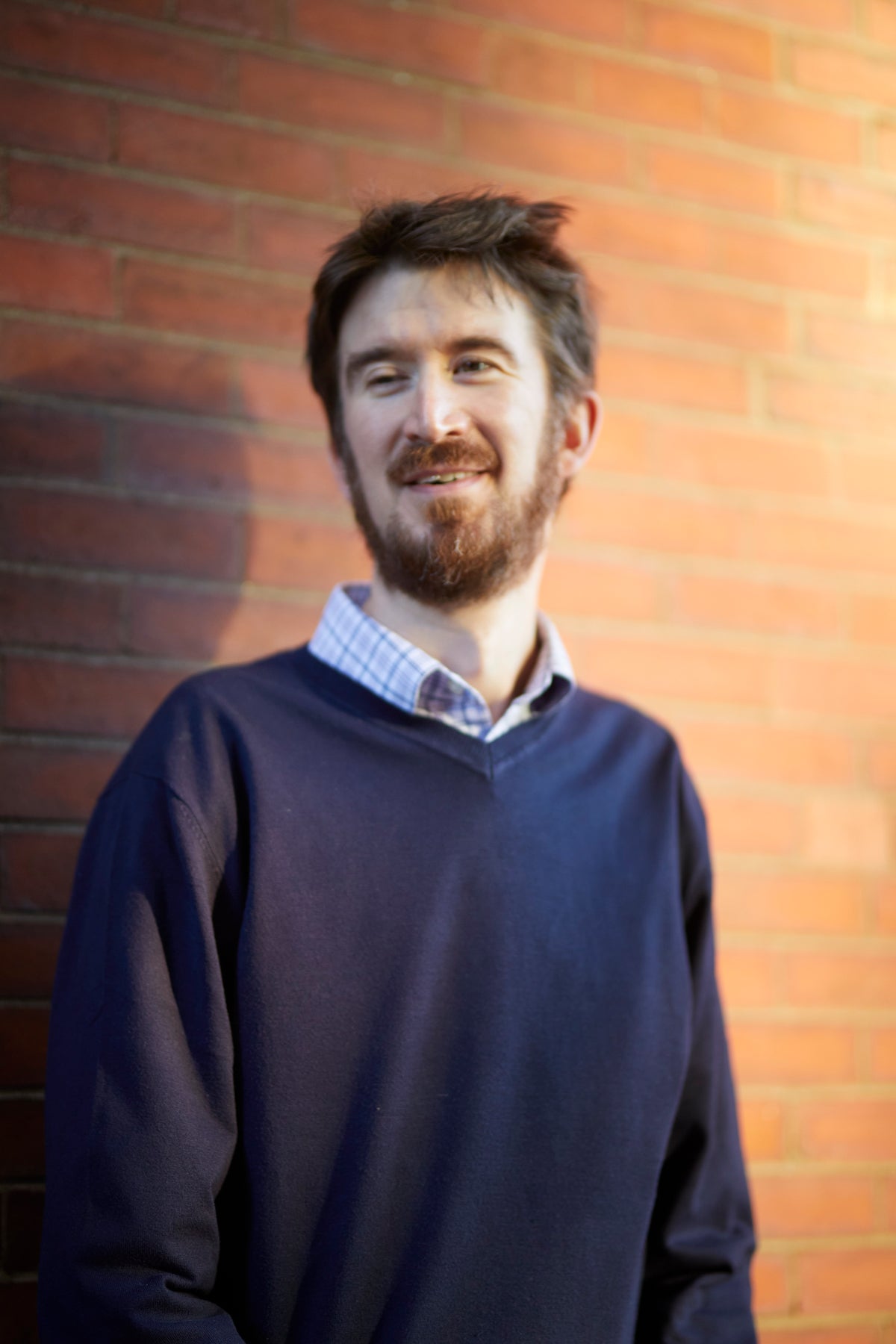
Coral reefs do not grow overnight. At best, the corals in Bay of Ranobe grow just a few centimeters every year. Plus, reefs are intricate ecosystems where species mix and mingle and come to depend on one another. Reefs need sea urchins and other herbivores to keep algae levels under control. They need sponges and other detritivores to feast on animal waste and decomposing corpses. They need sea slugs and snails and crabs and many other life-forms working in concert over many years to transform corals and stone into an underwater metropolis.
Ordinarily, attracting this hodgepodge of aquatic life to a reef is a process dictated firmly on Mother Nature’s terms. Reef Doctor’s first few artificial reefs were put in the water and essentially left to be. This new project will attempt to speed things up through an experimental approach devised by Aaron Hartmann, a marine biologist in Harvard’s Department of Organismic and Evolutionary Biology. Hartmann believes artificial reefs can attract more biodiversity in less time if they are seeded using autonomous reef monitoring structures, or ARMS. These devices stuff 10 sheets of rigid PVC stacked on a central rod into a square foot of space. The PVC sheets are fixed about an inch apart and the whole structure is attached to the seafloor so it can collect what Hartmann calls “cryptic reef biodiversity,” or tiny organisms that hide in the nooks and crannies of reefs and can be hard to discover.
ARMS have been used by scientists mostly for surveying reef biodiversity—dozens of species flock to the tight confines for shelter. In Madagascar, divers will place ARMS near healthy reefs for a year and let them fill up with local biota. Then the divers will raise the ARMS to the surface, immerse them in large bins of seawater on board small boats, and immediately transport them to some of the new artificial reef sites.
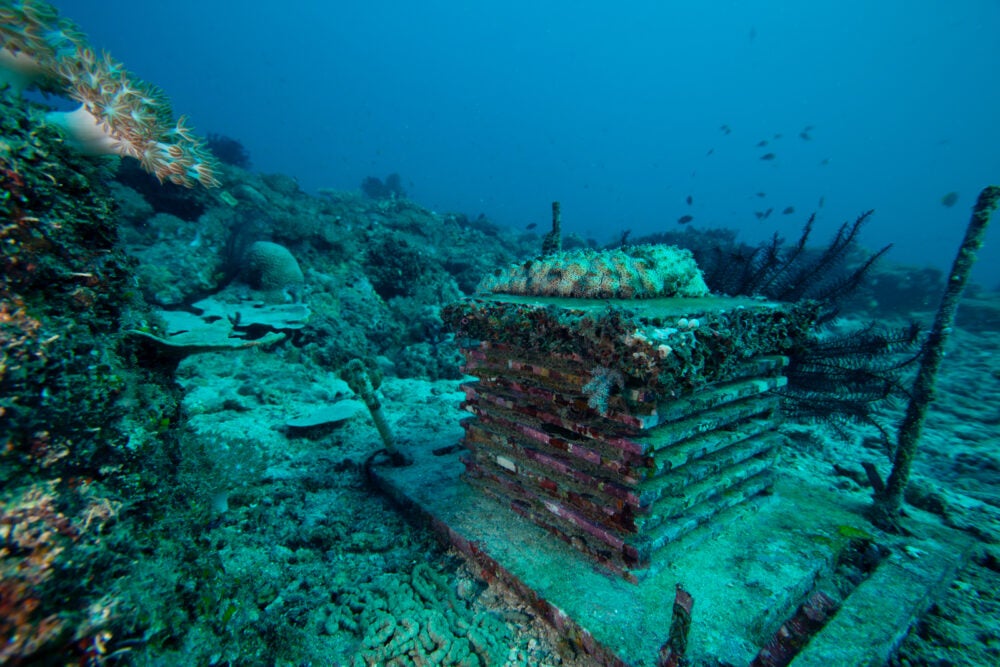
An ARMS in Bali.
Photo by David Liittschwager.
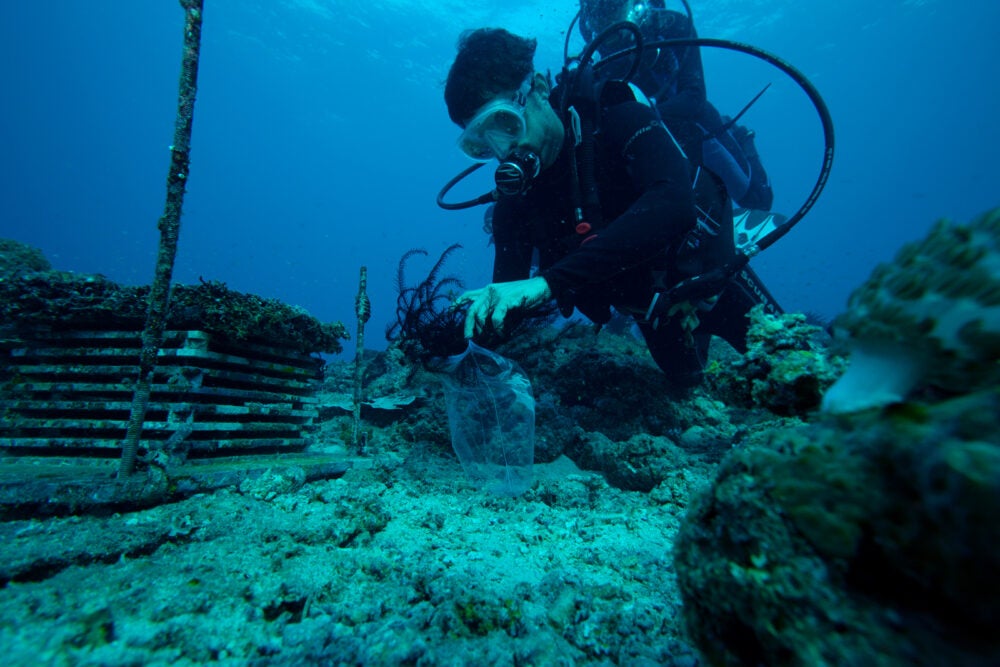
An ARMS in Bali and a diver gathering a sample.
Photo by David Liittschwager.
Since the ARMS will already be teeming with organisms essential for a healthy coral reef community, the hope is they will spur the ecological development of the artificial reefs. “The whole idea is to jump-start the community,” Hartmann says.
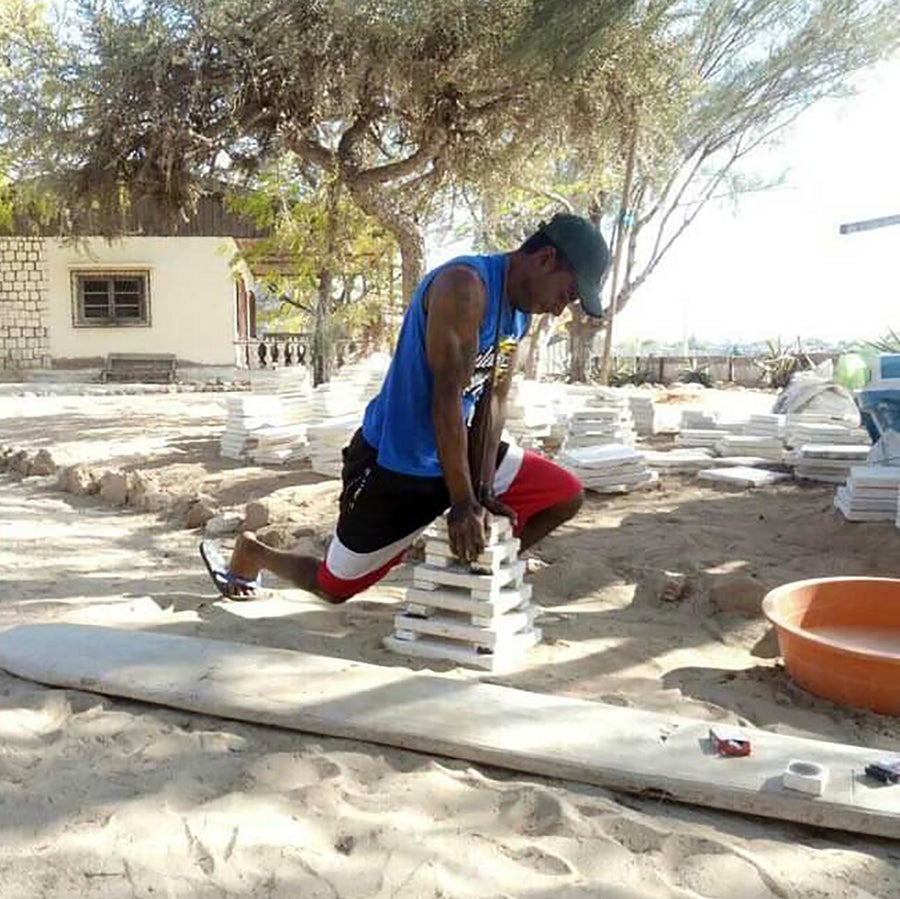
In total, the new project will consist of six artificial reefs, each spanning one hectare. Three of the reefs will be seeded with multiple ARMS, while the other three will serve as control sites. All the new reefs will probably be closed off to fishing for one year—a process that will include significant input and collaboration with FIMIHARA. Among the questions the scientists hope to answer are: Do artificial reefs attract more fish and more types of fish to an area, and does the ARMS technique further increase yields?
One of the great unknowns when it comes to artificial reefs is, if the fish come, where exactly are they coming from? Are they new to the fishery? Or are they simply swimming over from older, less healthy reefs nearby? If it’s the latter, says Christopher Golden, an assistant professor of nutrition and planetary health at the Harvard T.H. Chan School of Public Health, then artificial reefs could cluster fish into a single area for fishers to target, worsening overfishing.
Golden thinks it’s unlikely this will happen in Bay of Ranobe, in part because the project isn’t plopping down reefs where they didn’t exist before. Instead, it’s “extending and rehabilitating existing reefs,” he says. Right now, the bay has only a handful of healthy reefs for fish to inhabit, so adding a few healthy artificial reefs “should extend the area where fish can live and survive.”
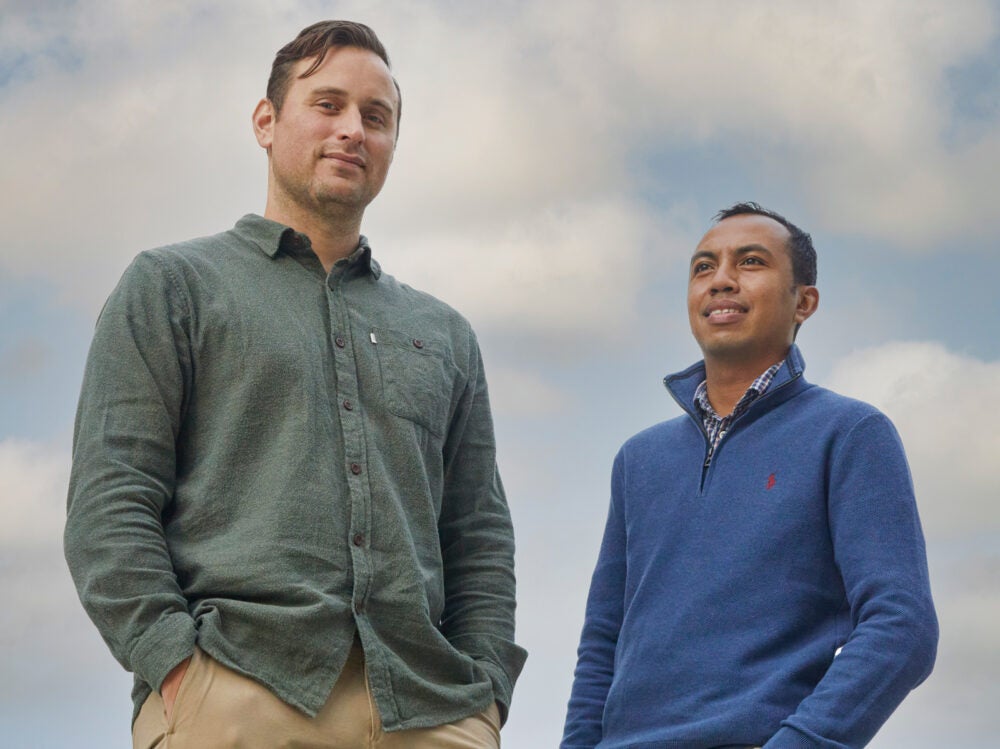
Harvard Chan School’s Chris Golden and his graduate student Hervet Randriamady are studying multiple aspects of fisheries in Bay of Ranobe.
Photo by Kent Dayton / Harvard Chan School.
Golden has conducted ecological and public health research in Madagascar since 1999. Until now, his work in the country has focused on its northeast region, which is mostly an evergreen rain forest and a far cry from the arid desert in the southwest. Golden is especially interested in parsing out how environmental changes affect local access to food and impact human health in the long run—he’s studied the epidemiology of anemia associated with bushmeat consumption and links between deforestation and malaria. Most recently, he has turned his attention toward the so-called Blue Foods (aquatic organisms farmed and wild from freshwater and marine sources) and how they contribute to global nutrition. In 2021, he published a paper in Nature determining that ramping up global aquatic food production by 8 percent over current levels within the next decade could prevent 166 million cases of nutrient deficiencies. In other words, if we’re serious about building more sustainable food systems and ending hunger, fisheries and aquaculture are going to play a large role.
Although this is his first research project in the southwest, Golden initially visited Bay of Ranobe 12 years ago and was struck by the extent to which people in the surrounding villages depended on the water. “The reef is the focal point of life,” he says. “There is very little agriculture in this area because it is a desert, so the reef is the primary food source for many people.” Residents keep some livestock but otherwise get their calories mostly from rice and cassava. “This is almost the exact area that is experiencing a famine,” Golden says. “Having a flourishing reef provides them with an oasis of food” in what is otherwise “a very difficult food system.”
In any population-level nutrition analysis, there are standard food-security and nutrition indicators to measure. The new research project will look beyond traditional public health metrics and analyze factors including the mental health and economic challenges engendered by food scarcity and environmental changes. Golden’s lab includes several Malagasy doctoral students who will be studying the relationship between the health of the reefs and that of the nearby villagers.
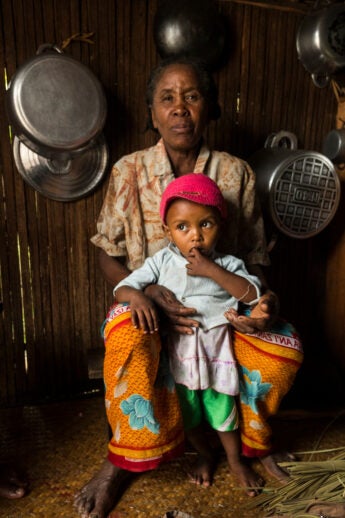
Villagers in Marofototra.
Photo by Rebecca Gaal

Drying fish in Maharihi.
Photo by Rebecca Gaal.
“If you depend on the reef and you see it degrading and know it is going to get destroyed, that will have an impact on your mental health, especially for fishers,” says Hervet Randriamady, a doctoral student of Golden’s and the national research director of Madagascar Health and Environmental Research, an organization Golden established. FIMIHARA president Souvenir says some fishers are farming algae from December to January, when the fishing is off limits. “In the event that we are no longer able to fish, we could switch to the farming of algae,” he says, noting it is profitable but that algae diseases are a big risk during warmer months.
Randriamady, who grew up in the highlands near Madagascar’s capital, Antananarivo, is intrigued by eco-anxiety and solastalgia—a type of existential distress that stems from environmental changes. The way he tells it, most fishers don’t talk directly about climate change or environmental degradation. Instead, they’ll lament that the fish were bigger and more plentiful in years past or that the cyclones weren’t so strong. This type of occupational stress and accompanying economic uncertainty could affect a person’s mental health, family relationships, and communities at large.
To understand how these issues are playing out along Bay of Ranobe and what might be done to mitigate them, Randriamady is working with Golden and Harvard Chan School psychological epidemiologists Karestan Koenen and Christy Denckla to develop a mental health assessment survey. He plans to administer it to fishers when the catch is plentiful and meager. He knows the stigma around mental health looms large in Madagascar, and is working to develop culturally appropriate strategies for discussing the issue.
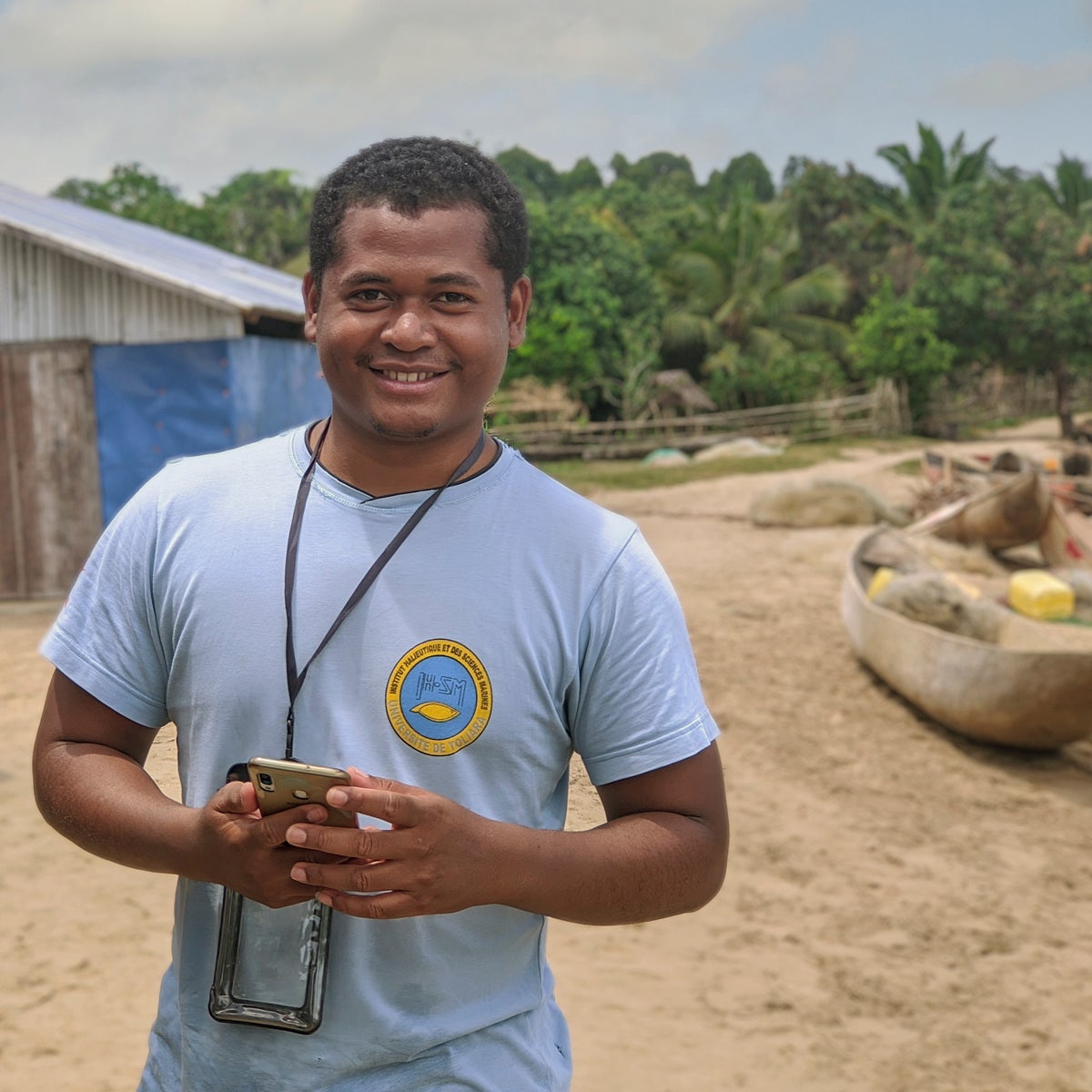
Also part of Golden’s team is Aroo Falinirina, a doctoral student at the University of Toliara Institute of Fisheries and Marine Science in Madagascar. Falinirina has worked in the southwest region for eight years, and says he’s seen fish prices tick up in local markets, a concern in areas of extreme poverty. He’s planning to conduct socioeconomic analyses in the area to understand how job opportunities and livelihoods ebb and flow with the health of the ecosystem.
Just as there’s no single culprit for the plight of coral reefs, there isn’t likely to be a single answer to rebuilding the complex ecological networks that have supported the people who live near Bay of Ranobe. Artificial reefs are one part of the puzzle, but they’re not a cure-all, nor are they immune to the rising water temperatures and ocean acidification associated with climate change, which can trigger mass-bleaching events that leave reefs bone white and barren. Other threats include harmful fishing practices, pollution from inland development and mining that trickles into waterways, and fish moving toward the world’s poles seeking cooler waters, a phenomenon that has many fishery-focused researchers on edge.
The challenges are plentiful, but the potential public health benefits of artificial reefs could be significant. Falinirina points out that it’s not just about nutrition and food security but also about safety. As the fishery has degraded, he says, local fishers have taken to fishing farther and farther out to sea. “Every evening here, it is so windy, so there is a lot of risk when they go farther out,” he says. If the artificial reefs work, that risk–benefit equation changes. Fishers can stay closer to shore, saving time and resources while curbing the chances of a disaster at sea.
“We can change the community well-being, their income, and their economy,” Falinirina says. “I really want to see this change happen, and that is what is so exciting about this project.”
Hoby Randrianimanana contributed reporting to this story.

